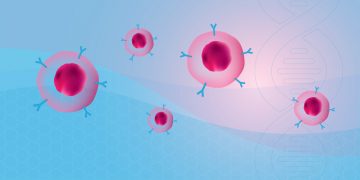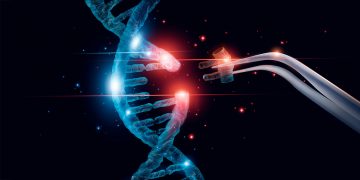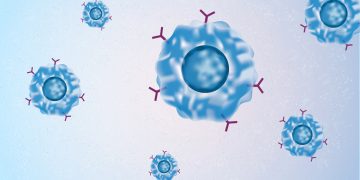
Saving Lives: Innovative Therapeutic Applications of Ion Exchange Resins
Although chromatography resins are usually thought of as tools to purify medicines, groundbreaking treatments now utilize resin beads as an integral component of the therapy itself. These therapies are essential for treating certain cancers and inflammatory disorders.

The Journey from Lab to Clinic: Zolgensma, the First Gene Therapy Treatment for Spinal Muscular Atrophy (SMA)
Translational research bridges the gap between scientific discoveries and real-world applications, transforming scientific breakthroughs into life-changing therapies. Success in this endeavor hinges on several factors, including collaboration between scientists and clinicians. A notable example of this is the approval of Zolgensma, a gene therapy for spinal muscular atrophy (SMA), which marked a significant milestone in the field of translational research.

Developing Biotherapeutics for Lung Cancer Treatment
In recent years, biologics — drugs derived from living culture systems — have become increasingly significant in the fight against a plethora of conditions. Unfortunately, the efficiency of these drugs comes at a cost. A daily dose of a biologic drug costs, on average, 22 times more than conventional small-molecule drugs. Therefore, biosimilars are developed to make them more accessible. Lung cancer is an example where the development of biosimilars could increase treatment options available for patients.

Poly(A) Tails: A Critical Quality Attribute in mRNA-based Therapeutics
The therapeutic potential of messenger RNA (mRNA) therapeutics has an unprecedented ability to target previously undruggable diseases. The poly(A) tail drives the therapeutic efficacy of the mRNA molecule. Using Droplet Digital PCR (ddPCR) technology to analyze poly(A) tail length and integrity yields unrivaled sensitivity, enabling developers to ensure high poly(A) tail integrity and, ultimately, functional therapeutic mRNAs.

Microphysiological Systems: A Game Changer for Drug Safety and Efficacy Studies?
In December 2022, a groundbreaking law was passed granting the U.S. FDA the authority to consider data from new alternative methods in the preclinical testing phase for new drug development. Among the new methods are 3D cell cultures that mimic human tissues and organs, known as microphysiological systems (MPS). The new law aims to improve clinical outcomes while decreasing reliance on animal testing. In this article, we discuss MPS and review data showing how they can synergize with Bio-Plex Assays.

A Pioneering Approach to Biotherapeutic Antibody Discovery
Immunotherapy has revolutionized cancer treatment, yet the drug discovery process to develop new biotherapeutic antibodies remains arduous. However, significant advances in antibody technology such as phage display have enabled fully human antibodies to be developed from animal-free libraries for just about any antigen.

Precise Cell and Gene Therapy Potency Quantification
Inadequate quality control assays shouldn’t limit cell and gene therapy applications. Instead, quantifying the potency of cell and gene therapies is essential for successful therapeutics. In this article, we describe multiple leading potency assays developed using Droplet Digital PCR (ddPCR) technology, including an assay that quantifies transgene integration and expression in one step.

Top 8 Advantages of Electroporation in Cell and Gene Therapy
Cell and gene therapies have seen record growth due to their potential to address the underlying causes of genetic and acquired diseases. Non-viral delivery methods are increasing in popularity due to their safety, cost-effectiveness, reduction in manufacturing time, and flexibility compared to viral vector delivery methods. Electroporation is a simple, broadly applicable method capable of delivering molecules to a wide range of cell types for either cell or gene therapy. This article outlines the top advantages of using electroporation in cell and gene therapy and why it might be a good approach for your own research group.

Unlocking the Power of Analysis with Automation
Disparate systems, distributed teams, and overly complex technologies are a recipe for inefficiency in research and development (R&D) laboratories, especially in drug development. With the pressure to meet challenging deadlines and strict regulations, it is easy for working practices to become disconnected. To improve the efficiency, accuracy, and consistency of data generation, acquisition, and management, R&D organizations are looking to streamline their lab practices by investing in technologies that automate data generation, accelerate data collection speed and storage, and enhance the quality and reliability of the information produced. Lab automation presents exciting opportunities for future research, promising novel advances in machine learning and artificial intelligence (AI), liquid handling robotics, and cloud-based data workflows.

Monitoring CAR T-Cell Therapy Quality with Droplet Digital PCR
The CAR T-cell manufacturing process involves high potential for variability. Learn how sensitive ddPCR assays can be used to ensure safety and efficacy.
